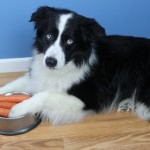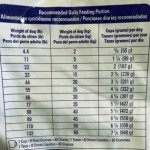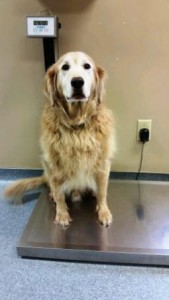Weight Management and Fitness for your Pet
Your Pet’s New Year’s Resolution
Does your pet have a New Year’s Resolution? Let this be the year where your pet reaches a healthy target weight.  Surprisingly, most pet owners do not recognize that their pet is overweight. According to the Association for Pet Obesity Prevention (APOP), approximately 53% of dogs and 58% of cats are overweight or obese.
Surprisingly, most pet owners do not recognize that their pet is overweight. According to the Association for Pet Obesity Prevention (APOP), approximately 53% of dogs and 58% of cats are overweight or obese.
Being overweight, or obese, can create many health problems for your pet, such as: diabetes, high blood pressure, heart and lung disease, bone and joint disease, and it can shorten your pet’s life by up to 2 years.
 If you are unsure, or concerned about your pet’s weight, the first step is to bring them in for an exam. Sometimes certain diseases can be responsible for weight gain. If your pet is otherwise healthy, but just overweight, talk to one of our veterinarians to formulate a weight loss plan for your pet.
If you are unsure, or concerned about your pet’s weight, the first step is to bring them in for an exam. Sometimes certain diseases can be responsible for weight gain. If your pet is otherwise healthy, but just overweight, talk to one of our veterinarians to formulate a weight loss plan for your pet.
Here are some easy tips on how to get started with a weight loss plan.
1. Find a lower calorie food to kick start your pet’s diet. We have several diets to choose from that are formulated for weight loss, and one of our veterinarians can help you decide which one is right for your pet.
2. Avoid reliance on Feeding Tables found on pet food bags. Most of these tables will over-feed your pet by as much as 30%. Our veterinarians will be happy to recommend an appropriate amount to feed your pet, based on breed, age, 
 and activity level.
and activity level.
3. Don’t guess: measure your pet’s food with an 8 oz. measuring cup, not a coffee cup or food scoop.
4. After starting the new food, check your pet’s weight regularly and frequently. You may need to alter your plan if they are losing too much, or not enough weight, by adding or restricting calories.
 5. Don’t diet too drastically. Crash dieting can lead to serious health issues. Cats can develop fatty liver disease, which can be fatal, if they have too severe of a reduction in their daily calorie intake.
5. Don’t diet too drastically. Crash dieting can lead to serious health issues. Cats can develop fatty liver disease, which can be fatal, if they have too severe of a reduction in their daily calorie intake.
 6. Try to take pre-packaged treats out of the diet. Instead give your dog small quantities of carrots or green beans. Never give your dog grapes or raisins, as these can be very dangerous to your pet. Never give your dog table scraps. If you are going to give pre-packaged treats, break them in halves or quarters, and try to reduce the frequency in which they are given. Give your cat small amounts of boiled chicken or cooked fish for an extra treat.
6. Try to take pre-packaged treats out of the diet. Instead give your dog small quantities of carrots or green beans. Never give your dog grapes or raisins, as these can be very dangerous to your pet. Never give your dog table scraps. If you are going to give pre-packaged treats, break them in halves or quarters, and try to reduce the frequency in which they are given. Give your cat small amounts of boiled chicken or cooked fish for an extra treat.
 7. Don’t leave your cat’s food bowl down all day and refill it every time it is empty. It is best to switch to meal-feeding instead, giving your cat controlled portions of food, two or three times a day. Most indoor cats require no more than one-half cup of dry food per day.
7. Don’t leave your cat’s food bowl down all day and refill it every time it is empty. It is best to switch to meal-feeding instead, giving your cat controlled portions of food, two or three times a day. Most indoor cats require no more than one-half cup of dry food per day.
8. Increase your pet’s activity. For cats, shine a flashlight over the floors or walls, or swish a pole topped with feathers past your cat’s face to trigger a hunt and chase game. For dogs, take them for a walk, play fetch, etc. As your pet gets more accustomed to the daily routine, you can increase the intensity of the workout.
 Your pet will be more active and happy when they have achieved their ideal weight.
Your pet will be more active and happy when they have achieved their ideal weight.
 |

